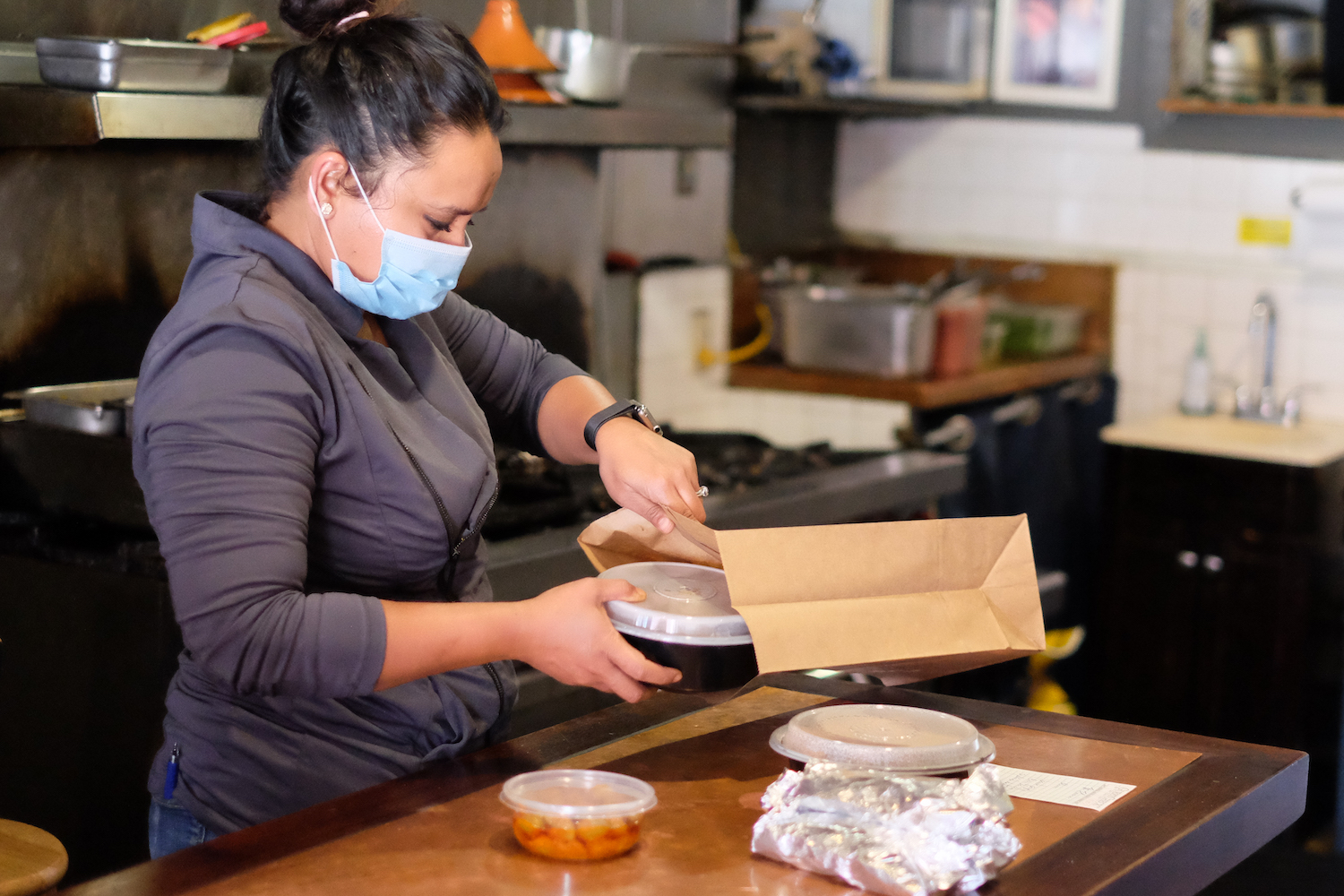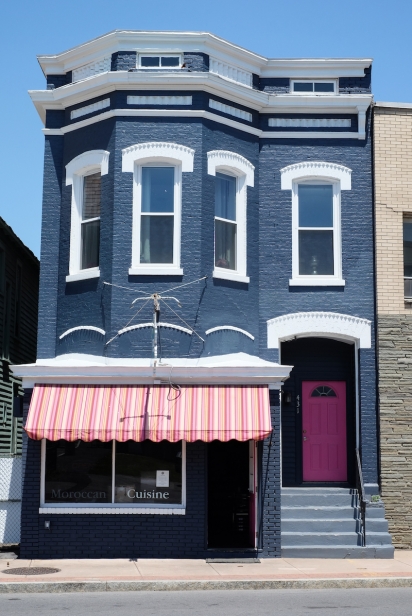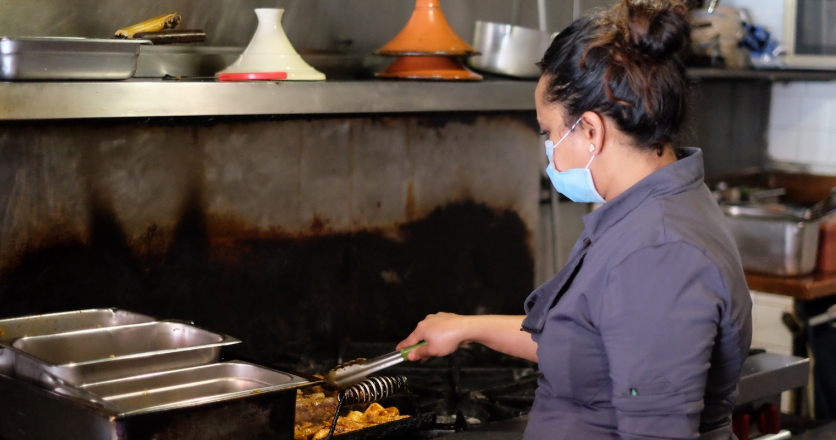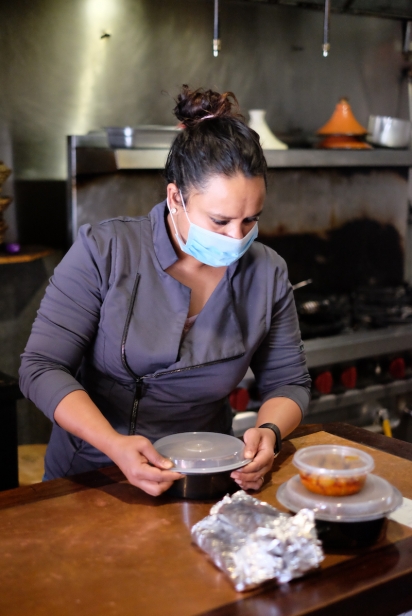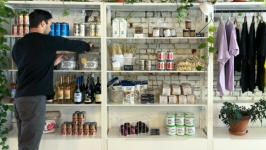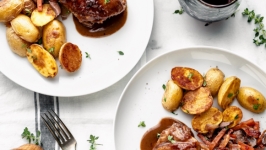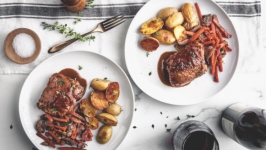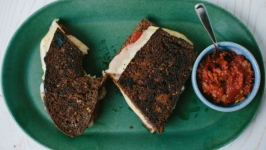Tara Kitchen
Aneesa Waheed’s energy practically jumps through the phone as we talk about how she and her husband Muntasim Shoaib, have navigated the challenges of running Tara Kitchen in the time of Coronavirus. Words like “fearless” and “powerhouse” come to mind when thinking about how she and Muntasim have converted their business from 5% take-out to 100% take-out overnight.
Beyond Aneesa’s optimistic outlook, she’s also a realist, firmly rooted in the practicalities of her business and the local community. Without ignoring or diminishing the very real consequences of this pandemic, she has chosen to stay positive. “Everything that I end up doing is basically solving problems, so it’s fun for me.” It is this attitude (and her fragrant tagines) that have allowed Tara Kitchen to face the many challenges of social distancing –– and there are many challenges. Here’s a look at the difficulties Tara Kitchen, like many restaurants, is up against and how Aneesa and her team have taken them on.
Practical Challenges
Converting a restaurant from sit-in dining to take-out might seem simple. You just cook the food and package it instead of plate it, right? Wrong. As Aneesa explained, “when you’re in the back of the house, that’s when you realize just how dramatically different [take-out] is.
“When you’re plating food for a table, every element goes out at a different time. You have well over an hour to service a single table, and there are lots of stops in between for drinks and desserts, which don’t directly involve the kitchen. This way you have a lot more time to cook everything perfectly. In a take-out model, every single thing –– from appetizers to desserts –– has to be done at the exact same time, packaged individually, bagged, and ready for pick up.”
Preparing each order so that every item is ready at the same time isn’t the only time management challenge in moving to a 100% take-out model. “Previously, we might service 150 customers a night over the course of 3 - 4 hours. Now, we’re servicing 150 clients, and they all want to pick up between the hours of 5 - 5:30. Everybody ordering take-out, I’ve discovered, eats at 5:30. It’s really interesting. And then at 7 o’clock, it seems like everyone just goes to bed because it’s completely, totally dead. [Laughs] That has been huge for us in terms of being a challenge.
“The demand for take-out has been amazing, but at the same time, we have turned orders away. Yesterday was just, you know, um crushing. Around 6:30 we turned off our ordering systems because we couldn’t take any more. Every restaurant anticipates a certain crowd and a certain amount of product that’s going to be used. You can’t just prep endlessly, so at some point you have to say ‘no’ because I would rather people eat good food, than be served something that was sub-par.”
What’s Working
Of course, crushing levels of demand is the best kind of problem to have, and Aneesa wholeheartedly recognizes that and embraces the challenges that come with it. “Every single meeting or any other activity I would normally have has been cancelled, so I’ve focused 100% of my attention and energy on the restaurant. It feels like going back to opening 10 years ago because everything is so different. That has been energizing for me.”
The Tara Kitchen team has adjusted their prep schedule and timing to factor in this new flow, as well as other small, but significant changes. For example, tagines “come off the stove at 180 degrees, so if you put it into the plastic container, you cannot pop the lid on it right away because it will just pop off. So we had to back up our timing based on that. We’ve made a lot of adjustments like that.”
Aneesa has also begun working with Emily Rose Lang, who helped install GloriaFood, an online ordering app, on Tara Kitchen’s website. “When it’s incredibly busy, the last thing you have time for is to pick up the phone and actually take an order.” Before GloriaFood was installed, Aneesa describes the time consuming task of taking payment information over the phone or serving people who walked up to the restaurant. “Now somebody can order the food, drive up to the restaurant, and have their food dropped in their trunk. It’s totally contactless.” Emily has also been helping Aneesa keep up with marketing, one of the many additional tasks that come with running a small business. “Literally, Emily has been a god-send. It’s like me having four-hands now!”
Strength In Community
Aneesa and Muntasim’s gumption might stem from their own internal reserve of optimism, creativity, and drive, but community came up again and again in my conversation with Aneesa. Even while she described “using every ounce of energy, every ounce of creativity, and every ounce of entrepreneurship to make sure we’re still standing on the other end,” she also demonstrated extraordinary compassion and community mindedness.
When dining-in was first shut down, Aneesa describes facing “a million confusing and scary questions.” Instead of shutting down entirely, Aneesa turned her focus to what she could safely do, and she didn’t just think of herself. “We might be dead in the water in a month, so might as well do something good,” she thought. That’s how Tara Kitchen began sending meals to the ICU, and what started at 15 meals a week has now grown to around 150 meals each week.
Additionally, Aneesa teamed up with Habitat Restore to help drive sales on their website, and she ran a diaper drive, putting out a call for donations on Facebook. “Hundreds of people showed up with diapers, which was awesome.”
Finally, Aneesa’s found the energy to have some fun, running “pop ups” within Tara Kitchen, where she and her team cook recipes from other cuisines. “We’ve done Caribbean. I did an Indo-Chinese night. We’re doing a falafel Friday this Friday.” (If you haven’t already, this might be a good (read: delicious) reason to follow Tara Kitchen on Facebook.)
Through all of these programs, Aneesa has not only kept Tara Kitchen afloat; she has also enriched the community around her. “I’m loving just how connected I think I feel to our community. It’s like this daily dialogue I have with thousands of people. At the end of the night, I sometimes talk about my day or a fun idea on Facebook, and then everyone chimes in. Having this virtual conversation in the absence of physical conversations has been amazing. I’m so glad that we decided to stay open.”
After all, isn’t community the reason so many restaurateurs get into the business? For Tara Kitchen, it might just be the reason they stay in business too.
Rapid Fire Five
1. One thing that makes you smile every day: Oh boy, that’s not a rapid fire question. [Laughing] My kids!
2. One thing that makes you want to pull your hair out: My kids! [Laughing] No, I’m kidding. An extremely close friend of mine has been helping me with my kids. Pretty much home schooling them since I’ve been at work for 14 hours a day most days. And my kids have been so supportive and understanding. It’s been huge for me. It’s really been huge.
3.Your drink of choice for Zoom happy hours: Oh, I don’t do those. Your drink of choice post-work then: Coconut water.
4. Your favorite way to get outside: Just walking.
5. Name one other local business you’re inspired by: Clark House Hospitality.
Tara Kitchen | @tarakitchentroy
Clark House Hospitality | @clarkhousehospitality


